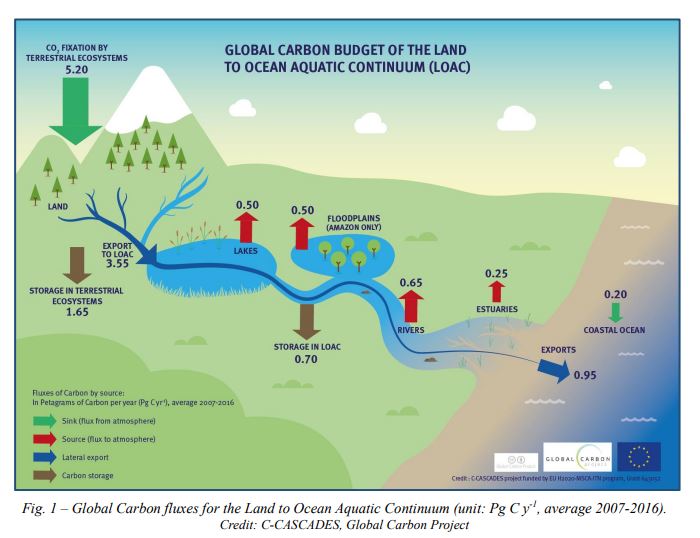Discover and read the best of Twitter Threads about #plankton
Most recents (6)
1/ Hello again, by now you’re all familiar with #plankton and why we should care about it. Before we go any further, I’m going to take us back to look at the history of plankton research. How did we learn all we did about plankton? Our 🧵starts back in the 1816. #ScienceWeek2022
1. Good morning! Early start on Saturdays thread as it’s the weekend 😄 I’m going just do a quick thread today about Lough Furnace, which is the aquatic link between the Burrishoole catchment and the North Atlantic 

2. This aquatic link runs from the Owenduff/Nephin and Bellacorick bog SACs, @WildNephin, down through Furnace and into Clew Bay SAC, very close to the shelf edge, so 🐟moving in and out of Furnace are essentially on a 🛣️between #Biodiversity hotspots @npwsBioData @MarineInst 

3. The lake is actually a coastal lagoon, which is a rare, designated habitat (Code 1150). Some of you might be familiar with e.g. Loch Hyne and the salt lake near Clifden. Very detailed information from Brenda Healy on this habitat here from the 1990s: npws.ie/sites/default/…
1. Tuesday 🧵PART 2. Before we talk about #ClimateChange, we might have a look at what happens to all the #Carbon coming off the bogs and into the rivers and lakes, i.e. the transport of terrestrials stores of Carbon to the sea. This is a great infographic from the @c_cascades 

2. Current estimates put this at about 5.1 Pg of C per year, although most people expect this to rise, considering the high uncertainty, ongoing anthropogenic impacts, and continual refinement of the science aslopubs.onlinelibrary.wiley.com/doi/10.1002/lo…
3. One of the parts of this carbon is Dissolved Organic Carbon (DOC) which is the brown colour that you see in bog streams – those of you with water supplies coming off bogs will be familiar with this kind of change
Since Monday a small but powerful delegation is representing @CREAF_ecologia at #UNOceanConference2022 in Lisbon.
Why are we, a mainly (but not exclusively) terrestrial ecology research center, at #UNOC2022?
🧵#ScienceDiplomacy #TurquoiseDiplomacy #NoBlueNoGreen #CREAF20k
Why are we, a mainly (but not exclusively) terrestrial ecology research center, at #UNOC2022?
🧵#ScienceDiplomacy #TurquoiseDiplomacy #NoBlueNoGreen #CREAF20k

As Her Deepness @SylviaEarle says, “no blue 💙, no green 💚”, ‘cuz what happens in & to the #ocean affects the whole world since the ocean absorbs:
🔥 90% of the 🌏 extra heat since the 50s
🫧 1/4 of the CO2 from human emissions
#UNOC2022 #OceanDiplomacy #TurquoiseDiplomacy
🔥 90% of the 🌏 extra heat since the 50s
🫧 1/4 of the CO2 from human emissions
#UNOC2022 #OceanDiplomacy #TurquoiseDiplomacy

And what happens in the 💚 also affects deeply the 💙
Our postdoc @ezteliz research focuses on the links between terrestrial and #marine systems, and how river discharges have a great impact on coastal areas, specially #plankton communities.
#UNOC2022 #TurquoiseDiplomacy
Our postdoc @ezteliz research focuses on the links between terrestrial and #marine systems, and how river discharges have a great impact on coastal areas, specially #plankton communities.
#UNOC2022 #TurquoiseDiplomacy

After some reorganization we're back to somewhat regular programming! Raise your hand if you're looking for some #DistanceLearning & #SchoolsOutScience about #ocean, #stem, #STEMeducation?
Today we're promoting some cool accounts to watch in prep of a big announcement tomorrow!
Today we're promoting some cool accounts to watch in prep of a big announcement tomorrow!
@EmmanuelMacron The image on the left shows a fire from 1989, and the image on the right has been online since at least 2012. A number of other outdated and unrelated photographs have also been circulated as if they depicted the 2019 #AmazonFires.
snopes.com/fact-check/ama…
snopes.com/fact-check/ama…
@EmmanuelMacron Plankton that are plants, known as #phytoplankton, grow and get their own energy through photosynthesis and are responsible for producing an estimated 80% of the world’s oxygen. They need #CO2 to thrive.
eos.org/research-spotl…
eos.org/research-spotl…
@EmmanuelMacron Many use fire to maintain farmland or to clear land.
Typically, activity peaks in early Sept & mostly stops by Nov.
#NASA satellite data indicates total fire activity across the #AmazonBasin this year has been close to the average of the past 15 years.
earthobservatory.nasa.gov/images/145464/…
Typically, activity peaks in early Sept & mostly stops by Nov.
#NASA satellite data indicates total fire activity across the #AmazonBasin this year has been close to the average of the past 15 years.
earthobservatory.nasa.gov/images/145464/…





